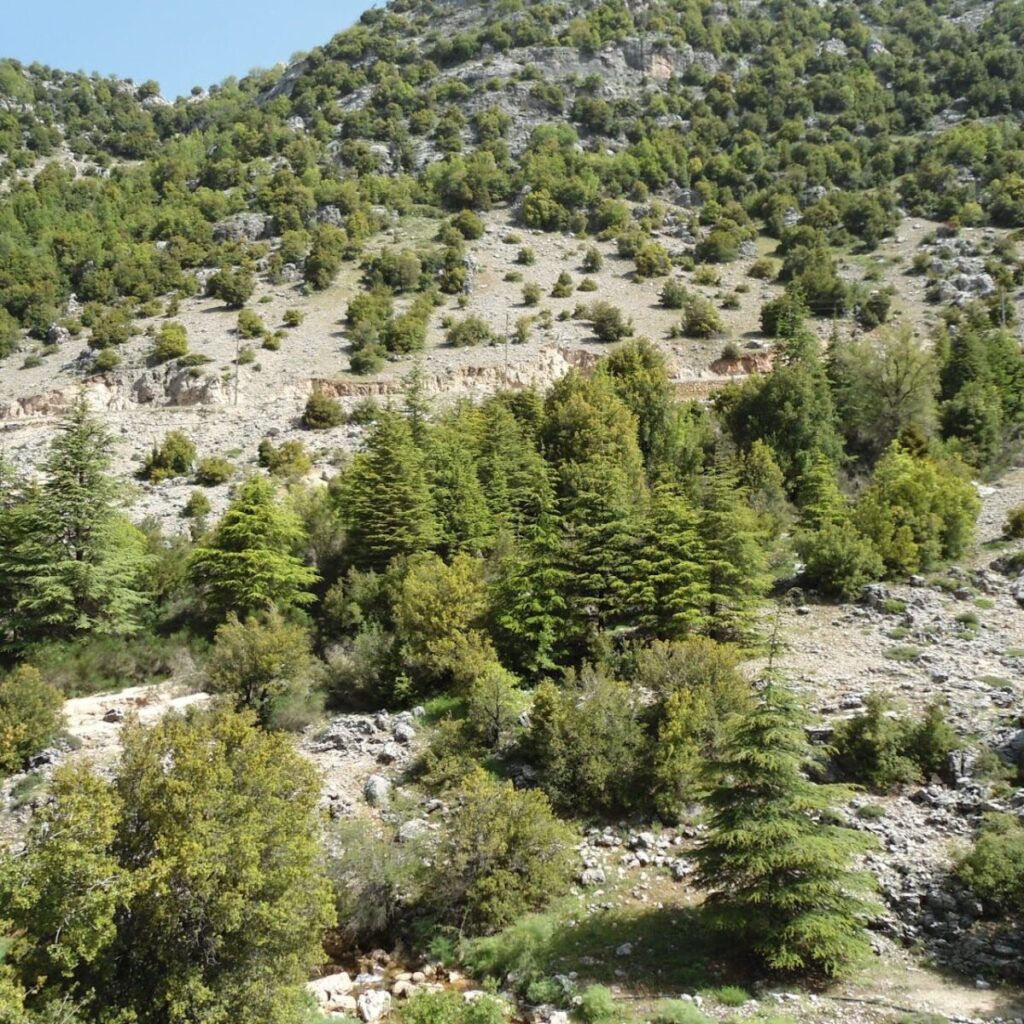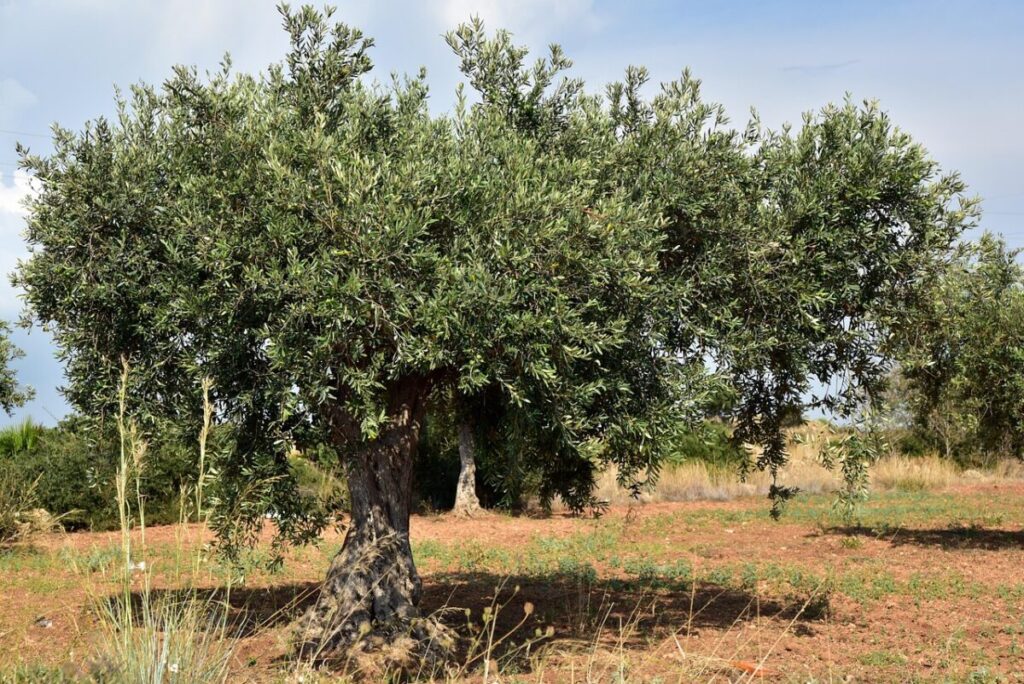Prolonged droughts, recurring fires, devastating diseases: Mediterranean forests are wavering, threatened in their vital role for biodiversity and human societies. Yet, far from succumbing to fatalism, initiatives are multiplying. In Algeria, Lebanon, Italy, and France, researchers, institutions, and local communities are inventing responses. Reforesting, diversifying, anticipating: all gestures that make a shared (and shaded) future possible.
This article is a summary of 5 articles dedicated to the rescue of Mediterranean forests and published in 22-med, available in the 11 languages used on the site. Starting Monday, find new topics covered by our journalists and correspondents.
The solutions of the 8th Mediterranean Forest Week : Jorge Dobner & Cristina Grao - Spain
An oil company commits to planting 423 million trees : Tarik Hafid - Algeria
Assisted migration: when forests flee climate change : Edward Sfeir - Lebanon
Apulia at the forefront against olive tree disease : Valentina Saini - Italy
Southern trees to effectively reforest the north : Paola Da Silva - France
Mediterranean forests bear the imprint of millennia of coexistence with humans. But today, they face an unprecedented crisis, marked by climate disruption and resource erosion. In Barcelona, in November 2024, the 8th Mediterranean Forest Week outlined a horizon: combining traditional knowledge, scientific innovation, and international cooperation to save this precious heritage.
In Algeria, 423 million trees for a decarbonized horizon
In a country where 75% of greenhouse gas emissions come from the energy sector, the announcement was historic. Sonatrach, the national hydrocarbons company, launched a vast program for the restoration of forest landscapes. The goal: to plant 423 million trees by 2033, covering 520,000 hectares reforested. The investment – one billion dollars (910 million euros) – aims at both carbon sequestration and the rehabilitation of forests degraded by fires.
Beyond the symbolic gesture, the project includes agroforestry: olive trees, carob trees, or pistachio trees will enrich rural farms, on 40-year concessions. For experts, the stakes are twofold: to strengthen the "green dam" launched in the 1970s against the advance of the desert, and to create a local dynamic where residents become actors in reforestation.

The Lebanese forest in motion

In Lebanon, the forest is moving to survive. Faced with prolonged droughts and the loss of hundreds of hectares, assisted migration appears as a future strategy. It involves moving certain species to areas where the climate of tomorrow will be more favorable to them.
The NGO Jouzour Loubnan is experimenting with this method on the slopes of Mount Lebanon: cedars, pines, and junipers are planted while anticipating climatic evolution, reinforced by the use of mycorrhizal fungi that increase their survival. The bet is bold, as Lebanese forests are a concentration of Mediterranean biodiversity. By relying on science and community involvement, assisted migration could become an exportable model, even if it remains costly and demanding in terms of monitoring.
Apulia facing the "olive tree plague"

In the heel of the Italian boot, 21 million olive trees have already succumbed to xylella fastidiosa. For the landscapes and economy of Apulia, it is an ecological and heritage disaster. Yet, resistance is organizing. Farmers like Giovanni Melcarne are collaborating with the CNR of Bari to develop new varieties capable of tolerating both the bacteria and water stress.
Four promising cultivars (plants resulting from selection, mutation, or hybridization) have already emerged, offering a glimmer of hope to olive growers. In the plain of millennial olive trees, grafting on ancient trees attempts to save trunks that are several hundred years old. And while the region has become a symbol of the threat, it could also become the matrix of resilient olive cultivation for the entire Mediterranean.
In France, seed orchards for tomorrow
In Loire-Atlantique, amidst the vineyards, stands an orchard like no other. Here, the National Forestry Office has planted 1,640 maritime pines from southern France. Their role: to produce seeds capable of reforesting northern forests, threatened by drought. Ultimately, these "seed orchards" will provide genetic material better suited to future climates.
“We are working for our grandchildren,” explains Jean-Christophe Helleisen, an engineer at the ONF. Other species will follow, such as pubescent oaks or Canary oaks, chosen for their resistance to fire and drought. The timeline is long-term – sometimes 40 to 50 years before the first harvests – but the ambition is clear: to anticipate the forests of 2075 rather than suffer their disappearance.
A common and interconnected future
From Barcelona to the countryside, one fact is clear: the survival of Mediterranean forests depends on inventive solutions, often local but destined to interconnect. Diversifying species, restoring landscapes, moving species, creating seed reserves: all strategies that complement each other.
The Mediterranean Forest Week reminded us that only international cooperation can provide the necessary scale. As scientist Magda Bou Dagher emphasizes: “Proactive environmental strategies are essential to avoid irreversible damage.” The experiences conducted in Algeria, Lebanon, Italy, or France show that the forest, far from being static, is already reinventing itself. It remains to give it the time, resources, and alliance of societies to grow again.

Cover photo: Mediterranean forests bear the imprint of millennia of coexistence with humans © 22-med
